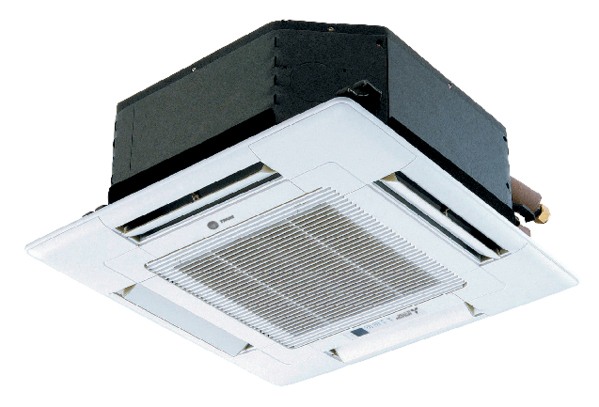


Author:
Revised:
March 19th, 2021
Are you worried your ductless mini-split won’t be installed properly?
Did your contractor even mention commissioning your system?
That’s a red flag—and one that could cost you thousands in damage and efficiency loss.
As someone who has installed HVAC systems for over 30 years across Central Ohio, I can confidently say: the difference between a flawless ductless install and a long-term headache is all in the details. Planning. Execution. And above all—commissioning.
In this article, I’ll walk you through the complete ductless installation process from start to finish. You’ll learn: what happens before installation day that most homeowners never see, what a proper install should look like (step-by-step), how AI tools are shaping today’s HVAC best practices, why commissioning isn’t optional if you want your system to work, and what to demand from your contractor.
Let’s dig in—because if it sounds too simple, you’re not getting the whole story.
What Is a Ductless Mini-Split System and Why Installation Matters
A ductless mini-split provides heating and cooling without ductwork, using:
- An indoor unit that delivers air to a single zone
- An outdoor condenser that powers the system
- A line set that carries refrigerant, power, and drainage
These systems are great for additions, homes without ducts, or customized zoning. But here’s the catch: ductless is not plug-and-play. Every detail in the install process matters.e.
What Homeowners Don’t See: Pre-Installation Planning
Before tools come out, decisions are already being made that affect your system’s performance. These include:
-
Precise load calculations (now powered by AI for more accuracy)
-
Choosing the right indoor head: wall-mounted, floor-mounted, or ceiling cassette
-
Planning for drainage and electrical access
Field Story: One homeowner had to pay twice—once for a poor install, and again for us to rip it out—because the original contractor placed the head where there was no drainage access. It flooded the room.
If your contractor doesn’t talk about these steps, they’re skipping critical work.
Installation Day: What Should Happen (But Often Doesn’t)
A professional install team will:
-
Arrive on time and protect your floors
-
Drill a clean 2.5" hole through the wall for the line set
-
Mount the indoor unit with precision
-
Place the outdoor unit on a composite pad (to reduce vibration/weather impact)
-
Route the line set through line hide
Line hide isn’t cosmetic—it’s protective. It shields your line set from weather, pests, and damage.
Pro Tip: Ask if line hide is included in the quote. If it’s not, ask why. Spoiler: “You don’t need it” isn’t a valid answer.

The Most Overlooked Details: Electrical and Drainage
These two issues cause the majority of install failures:
Electrical
-
Needs a dedicated 120V or 240V circuit
-
Must be installed by a licensed electrician
-
Should be coordinated in advance to avoid delays
Drainage
-
If installed above ground, gravity will handle condensate
-
If below ground, a condensate pump is required
Failure in either system can destroy your walls—and your warranty.
RELATED: Ductless Mini-Splits vs. Central Air: Pros and Cons
Commissioning: The Critical Step 80% of Installers Skip
Here’s where most companies fail.
Commissioning is the process of verifying that the system runs to exact manufacturer specs before leaving your home. It includes:
-
Nitrogen leak testing
-
Triple vacuum pulls
-
Pressure testing
-
Verifying refrigerant charge
-
Airflow testing and temperature readings
True Story: One install we took over was short-cycling and couldn’t cool the space. The issue? The previous team eyeballed the refrigerant. The fix was 2.3 ounces of refrigerant—something only commissioning would reveal.
If your contractor doesn’t talk about commissioning, walk away.

How AI Tools Are Improving Installations (But Not Replacing Craftsmanship)
AI is revolutionizing how we size and configure ductless systems:
-
Digital tools analyze home size, orientation, insulation, and regional climate
-
Smart apps now guide technicians step-by-step through startup
Apps like Kumo Cloud allow remote diagnostics and monitoring
But make no mistake: AI tools help, but they don’t replace experience.
Question for your contractor: Are you using smart commissioning tools—and do your techs know how to use them?
Post-Installation: What You Deserve (But Might Not Get)
Once the system is live, the job isn’t over. You should receive:
-
A full walkthrough of the controls
-
Registration of your warranty
-
Guidance on routine maintenance (like cleaning filters)
-
A follow-up inspection after 1–2 weeks
Maintenance Tip: Schedule a tune-up every spring and fall to keep your unit efficient and extend its lifespan.
Key Takeaways
-
Planning before install day ensures sizing and drainage are correct
-
Line hide is non-negotiable
-
Electrical and drainage issues are top causes of failure
-
Commissioning is not optional
-
AI tools are raising the bar—but only in experienced hands

O
What To Do Next
If you're considering a ductless mini-split system, don’t settle for vague quotes. Ask your contractor about:
-
Sizing and head placement strategy
-
Electrical and drainage planning
-
Commissioning steps and verification checklist
-
Use of line hide and mounting practices
-
AI tools used (if any)
Ready for a Transparent Quote?
Click below to schedule a quote with a Fire & Ice Comfort Advisor. We’ll inspect your home, explain all your options, and walk you through our full commissioning process—before you sign anything.
[Schedule Your Exact Quote Today]
Final Thoughts
Resolution: Now you know what separates a good ductless install from a bad one.
Remind: Too often, homeowners are left with noisy, underperforming systems because key steps like commissioning were skipped.
Relevant Next Step: Schedule your quote with a contractor who follows a documented, thorough process—and explains every step.
Reintroduce: At Fire & Ice, we’ve installed hundreds of these systems across Central Ohio. We don’t cut corners. We do it right—the first time.
Want to understand if ductless is right for your space?
Read “Ductless Mini-Splits 101: What They Do & How You Benefit

































